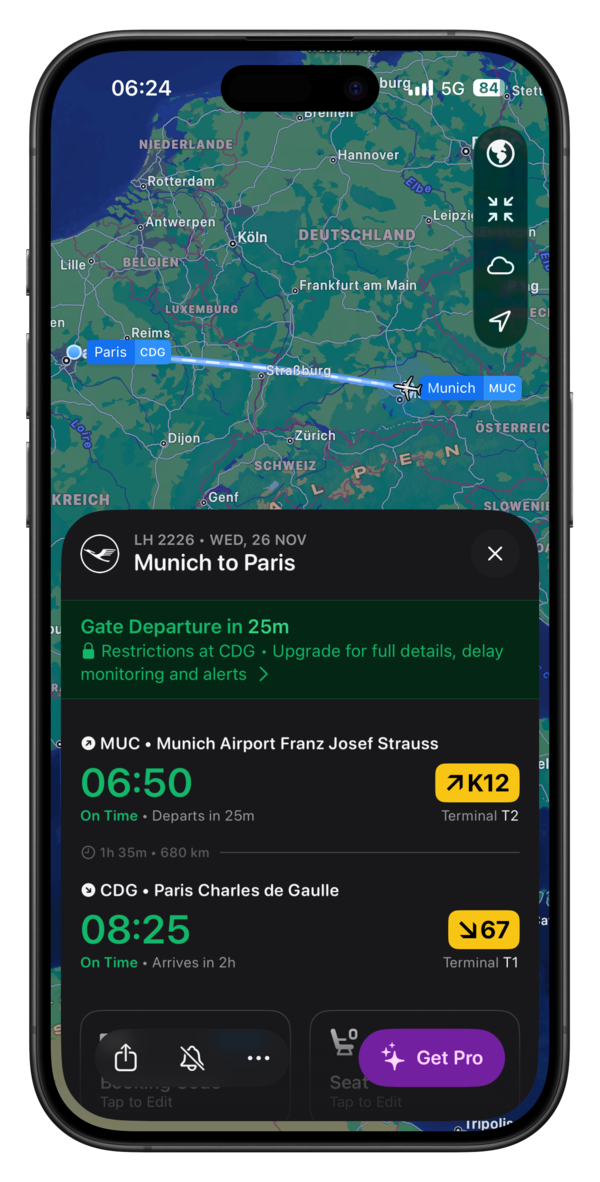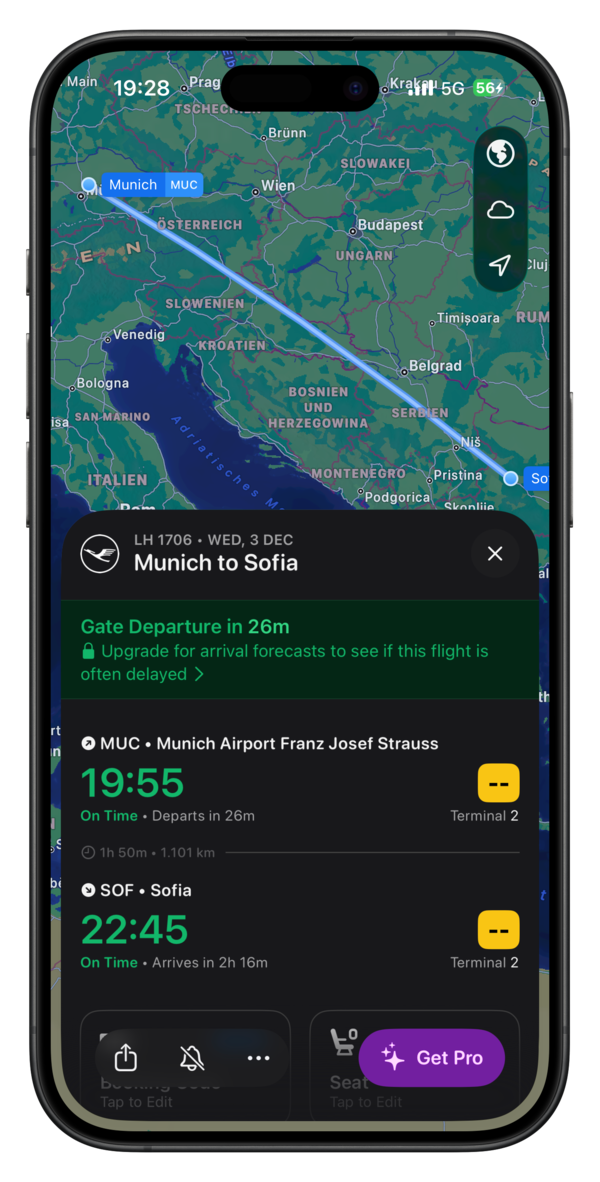Und wieder nach Hause. Der Herr Kapitän war zuversichtlich das die aufgrund von Schnee und Regen in München verlorene Zeit wieder eingeholt werden kann.

A few pictures of the beautiful city of Sofia in a December night.

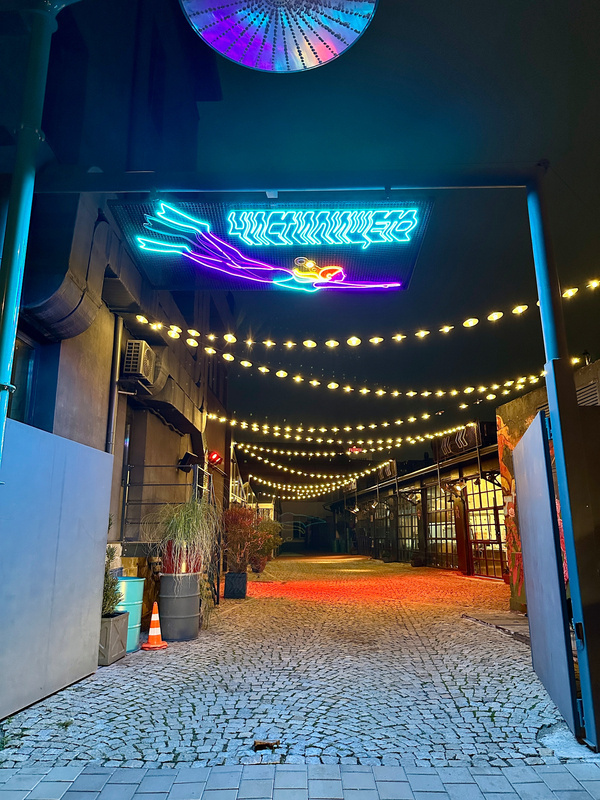

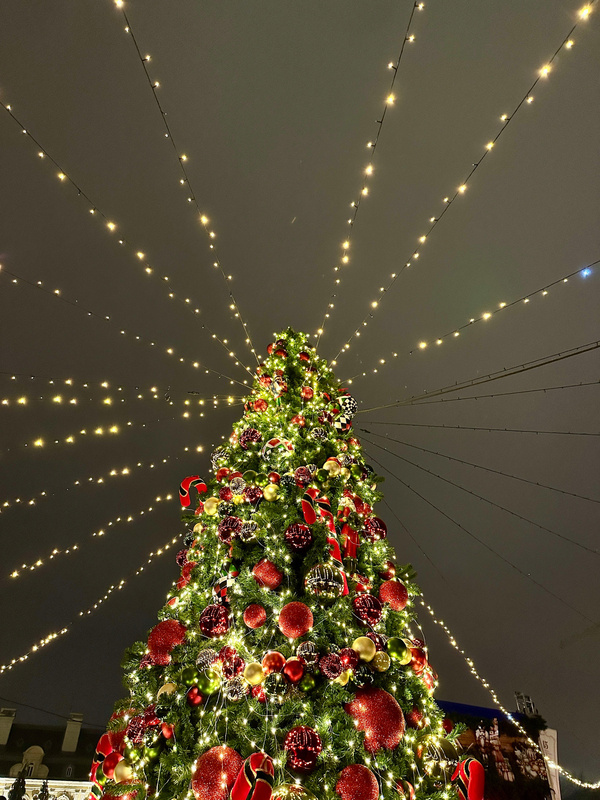
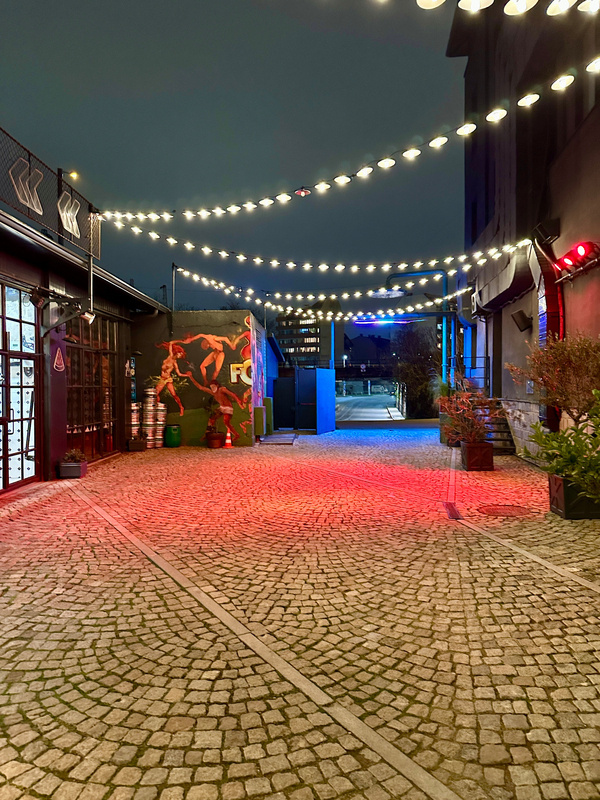
Amy

Zwei mal im Jahr
Ich kümmere mich um unsere Versicherungen und Finanzen, digitalisiere und ordne den Papierkram und mache unseren Haushalt smarter. Alles Dinge, an denen meine Frau kein wirkliches Interesse hat, und, vielleicht bis auf so manche Smarthome-Spielerei, im Großen und Ganzen dankbar ist, das ich es übernehme.
Schon vor einigen Jahren, als unsere Kinder noch kleiner waren, habe ich einen umfangreichen Text mit vielen Verlinkungen auf weiterführende Dokumente und Anleitungen geschrieben, der meiner Frau einen Überblick geben soll und Dinge erklärt, für den Fall das sie mal dringend an etwas ran muss und ich nicht greifbar sein sollte. Zwei mal im Jahr präsentiert mir mein iPhone seitdem eine Erinnerung, die mich an meine eigene Endlichkeit und die Verantwortung gegenüber meiner Familie erinnert.
Ich lese dann also über meine Patientenverfügung und tauche anschließend in das umfangreiche Dokument mit all den wichtigen Informationen, und prüfe ob es noch aktuell ist. Und zu meinem Erstaunen gibt es jedes Mal etwas das aktualisiert werden muss. Und immer, wenn ich am Ende der Notiz angekommen bin, habe ich zum Einen das Gefühl etwas Gutes und Wichtiges erledigt zu haben, aber auch Tränen in den Augen wenn ich meine abschließenden Sätze lese.
Au revoir Paris 👋
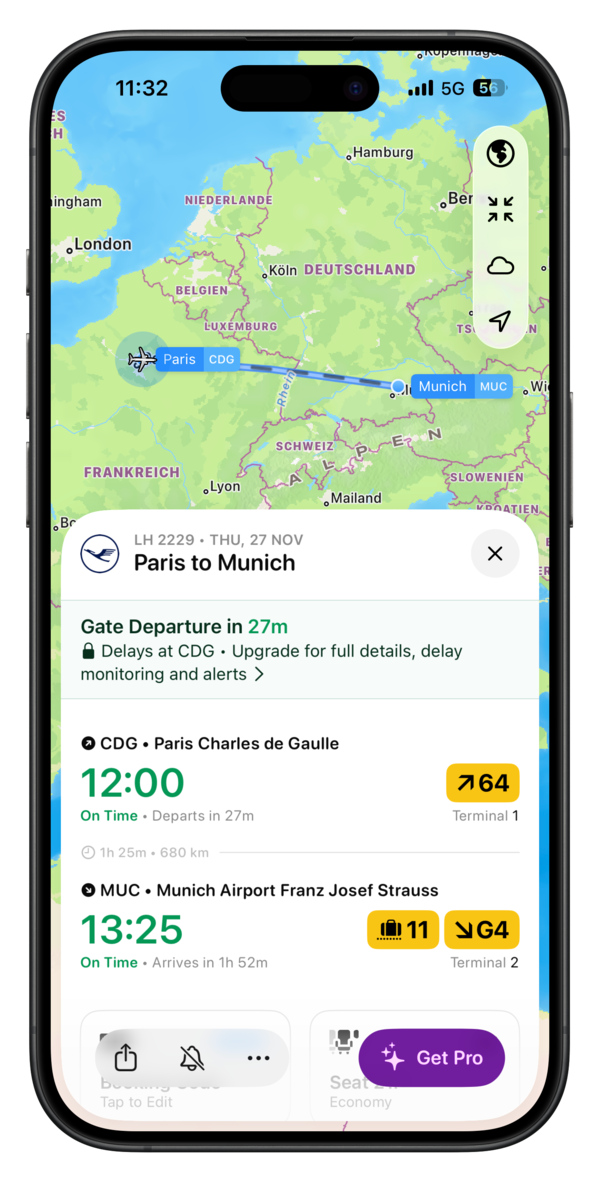
Paris en passant
Paris ist am Ende wie jede andere Stadt in der man sich für eine Nacht aus beruflichen Gründen aufhält: Es mag viel zu sehen geben (was für Paris definitiv der Fall ist), aber am Ende ist man froh, wenn man mal für eine Stunde aus den geschlossenen Räumen rauskommt, in denen man sich typischerweise aufhält.
Ich war also das erste Mal in Paris und hatte das Glück, in einem Hotel übernachten zu dürfen, das weniger als 500 Meter von seinem bekanntesten Wahrzeichen entfernt war. Damit war das Ziel einer möglichen Erkundungsrunde also klar.
Schon auf der Fahrt vom Flughafen zum Hotel habe ich die ganze Zeit darauf gewartet, wann man denn nun den Eiffelturm das erste Mal sieht. Ich hatte erstaunliche 90 Minuten dafür Zeit, in denen mein Fahrer alle möglichen Abkürzungen genommen hat, um den Pariser Verkehr irgendwie zu umfahren. So habe ich Ecken von Paris gesehen, die man vermutlich sonst eher nicht zu Gesicht bekommt. Naja, jedenfalls, als das Taxi in die Straße vom Hotel eingebogen ist, war es endlich soweit: Ich habe zum ersten Mal den Eiffelturm gesehen.

Nach einem langen Tag habe ich mir am späten Abend die Beine vertreten und war erstaunt, das am Eiffelturm noch so viel los war. Es war spät und kalt und trotzdem haben dutzende fliegende Händler versucht, Abnehmer für blinkende Miniatur-Eiffeltürme zu finden. Es gab auch einen Karaoke-Stand und alle möglichen Leute die einem irgendwas andrehen oder auch abnehmen wollten. Nach ein paar schnellen Schnappschüssen lag ich dann aber recht schnell vollkommen erschöpft im Bett.

Am nächsten Morgen hatte ich nach dem Frühstück eine Stunde, bevor ich spätestens ins Taxi zum Flughafen steigen musste. Natürlich bin ich nochmal zum Eiffelturm, in der Hoffnung auf vielleicht ein bisschen Sonnenaufgang im Hintergrund. Aber es war Grau, kalt und es hat genieselt. Das hat vielleicht die Sonne verdrängt, nicht aber die fliegenden Händler mit ihren blinkenden Souvenirs, die tatsächlich schon um 8 Uhr Morgens nach Kundschaft Ausschau gehalten haben. Egal wie mies das Wetter ist, Fotografen haben hier vermutlich immer was zu tun. Ich habe allein sechs Hochzeitspaare gezählt, zahlreiche Familien die offensichtlich Bilder für Weihnachtsgrüße haben machen lassen und jede Menge professionell ausgestattete Asiaten mit anderen Asiaten im Schlepptau, die sich in den lustigsten Posen fotografieren haben lassen. Das war alles wirklich putzig anzuschauen, und hätte ich nicht zum Flughafen gemusst, hätte ich mir gern Zeit gelassen das noch länger zu beobachten.
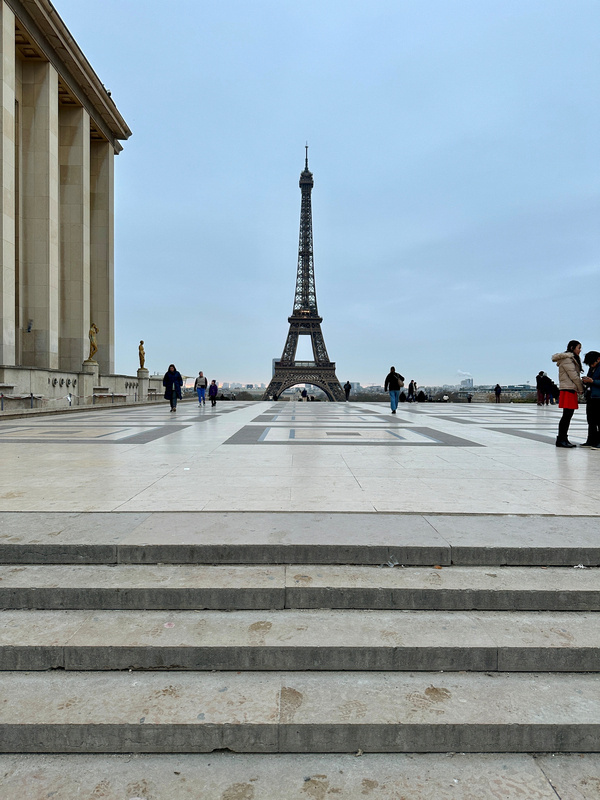
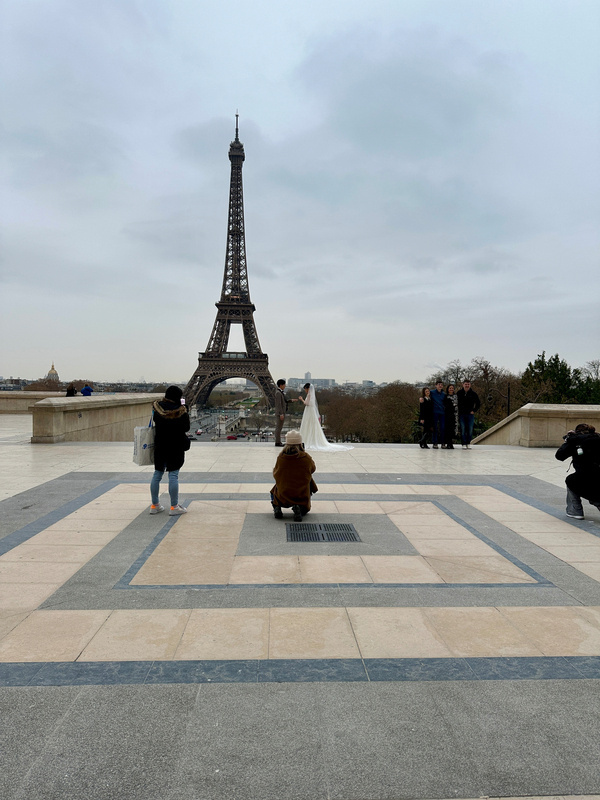
Für den ersten Aufenthalt war das alles ziemlich unspektakuläre. Aber das lässt ja zumindest noch etwas Potential für einen zweiten Besuch, dann hoffentlich mit mehr Zeit zum Erkunden und Genießen.
Der frühe Vogel fliegt (zum ersten Mal) nach Paris.
